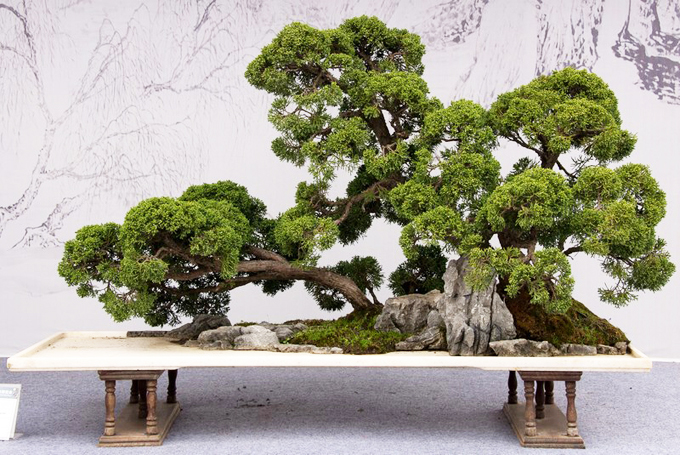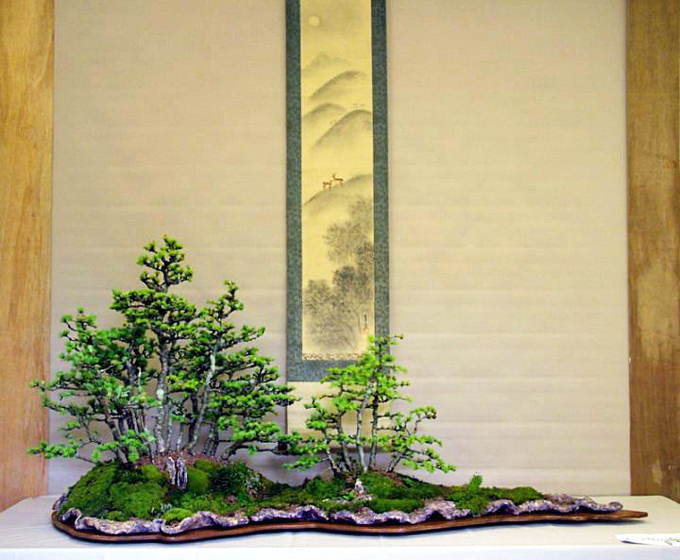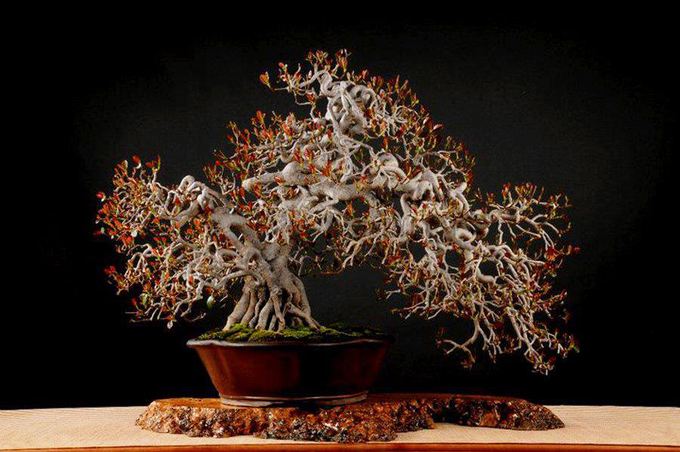 Judging by the background, this photo is from the 2013 BCI convention in China. Robert Steven sent us a bunch of great photos from this convention which we featured a while back (here, here and here). Maybe this is one that we missed. Anyway, I like the voluptuous, free-wheeling, unmanicured look. This photos and the others shown here are from Bonsai Phong.
Judging by the background, this photo is from the 2013 BCI convention in China. Robert Steven sent us a bunch of great photos from this convention which we featured a while back (here, here and here). Maybe this is one that we missed. Anyway, I like the voluptuous, free-wheeling, unmanicured look. This photos and the others shown here are from Bonsai Phong.
Lately we’ve been inundated with facebook friend requests from Vietnam. By the hundreds. This is in keeping with this statement by Robert Steven (from an earlier Bark post): “The interest in bonsai in Vietnam is amazing and unbelievable. I travel from the south of Ho Chi Min City to the north of Hanoi, from the remote villages to the cities, every house with terrace (when I say every house, I mean ALMOST every house) always has bonsai.”
The photos shown here are from Bonsai Phong on facebook. Because there are no attributions and the comments are all in Vietnamese, I have no idea who the trees belong to, nor if any if them are actually from Vietnam. Still, and even though we don’t like showing trees without attribution, in our relentless quest to satisfy your lust for unique bonsai I thought we’d just go ahead and post them. Maybe you can help identify the artists.
 Whatever it is, it’s great. At first glance I thought it was Japanese, but then there’s the un-Japanese looking slab and that strange white thing in the center (I don’t think it’s a figurine though). From here the trees look like Larches, but, if you’ve being paying any attention, you know about my guesses.
Whatever it is, it’s great. At first glance I thought it was Japanese, but then there’s the un-Japanese looking slab and that strange white thing in the center (I don’t think it’s a figurine though). From here the trees look like Larches, but, if you’ve being paying any attention, you know about my guesses.
 Wild and wooly on a wooden slab. Nice pot too. Other than that, your guess is at least as good as mine.
Wild and wooly on a wooden slab. Nice pot too. Other than that, your guess is at least as good as mine.
 This might be the only photo that’s actually from Vietnam. Or is it?
This might be the only photo that’s actually from Vietnam. Or is it?
The latter belongs to bonsai Min Hsuan Lo (Taiwan)
Greetings from Brazil…
Wayne,
The tree with the red leaves is a Vine Ficus, Ficus gibbosa, property of Lo Min Hsuan.
These trees are native to the southern tip of Taiwan, particularly to the town of Kenting, Pindong County. The tree portrays the typical twisted pattern common to this type of ficus.
Kind regards,
Jose Luis
Thanks Jose Luis,
As always your comments are pure value added… Keep ’em coming!